
5903255 REV A © Copyright 2011 DB Industries, Inc.
User Instruction Manual
8ft & 4ft LADDER SECTIONS WITH ADJUSTABLE LADDER BRACKET
This manual is intended to meet the Manufacturer’s Instructions as
required by ANSI Z359.1 and should be used as part of an employee
training program as required by OSHA.
Instructions for the following series products:
8ft & 4ft LADDER SECTIONS
WITH ADJUSTABLE LADDER BRACKET
8518506, 8518507 & 8518508

Figure 1 - 8518506
Figure 2 - 8518507
ADJUSTMENT TUBES
ADJUSTMENT LOCK PIN
MOUNTING
SLEEVE
ADJUSTMENT
LOCK PIN
LADDER HANGING
BRACKETS
LADDER SECUREMENT
PINS
2
LADDER
CONNECTING
PINS
LADDER
CONNECTING
BARACKET
MAIN LADDER
WELDMENT

Figure 3 - 8518508
3
LADDER
CONNECTING
PINS
LADDER
CONNECTING
BARACKET
MAIN LADDER
WELDMENT
WARNING: This product is part of a personal fall protection system.
The user must read and follow the manufacturer’s instructions for
each component of the system. These instructions must be provided
to the user and the rescuer. (See section 8 Terminology.) The user
must read and understand these instructions before using this
equipment. Manufacturer’s instructions must be followed for proper
use and maintenance of this equipment. Alterations or misuse of
equipment, or failure to follow instructions, may result in serious injury
or death.
IMPORTANT: If you have questions on the use, care, or suitability of
this equipment for your application, contact DBI-SALA.
IMPORTANT: Record the product identification information from the
ID label in the inspection and maintenance log in section 10.0 of this
manual.

4
1.0 APPLICATIONS
1.1 PURPOSE: These systems are designed to be used in conjunction
with approved DBI-SALA davits and mast extensions to provide
safe access and egress at height.
1.2 LIMITATIONS: The following application limitations must be
considered before using this equipment:
A. NUMBER OF USERS: This system is designed for a max-
imum of one user at any given time.
B. CAPACITY: This equipment is designed for use by persons
with a combined weight (clothing, tools, etc.) of no more than
310 lbs.
D. PERSONAL FALL ARREST SYSTEM: The personal fall arrest
system used with this equipment must meet the requirements
specified in section 2.1.
E. FREE FALL: Personal fall arrest systems used with this
equipment must be rigged to limit the free fall to a maximum
of six feet when possible, as required by OSHA. The maximum
free fall must always be within the manufacturer’s free fall
capacity of the system components used to arrest the fall.
See section 2.1 and connecting subsystem manufacturer’s
instructions for more information.
F. SWING FALLS: See Figure 4. Swing falls occur when the
anchorage point is not
directly above or below the
point where a fall occurs.
The force of striking an
object in a swing fall may
cause serious injury or
death. Minimize swing falls
by working as close to the
anchorage as possible. Do not
permit a swing fall if injury
could occur. Swing falls will
significantly increase the
clearance required when a
self retracting lifeline or other
variable length connecting
subsystem is used.
Figure 4- Swing Fall Hazard
C.
LADDER LENGTH:
When assembled, no combination of the
8518507 & 8518508 ladders can exceed a length of 32’ (384”).

5
G. FALL CLEARANCE: There must be sufficient clearance below
the user to arrest a fall before the user strikes the ground or
other obstruction. The clearance required is dependent on the
following factors:
• Length of connecting subsystem
• Deceleration distance
• Movement of harness attachment element (sliding D-ring)
• Worker height
• Free fall distance
See personal fall arrest system manufacturer’s instructions for
more information.
H. ENVIRONMENTAL HAZARDS: Use of this equipment in areas
with environmental hazards may require additional precautions
to reduce the possibility of injury to the user or damage to the
equipment. Hazards may include, but are not limited to; heat,
chemicals, corrosive environments, high voltage power lines,
gases, moving machinery, and sharp edges. Contact DBI-SALA
if you have questions about using this equipment where
environmental hazards exist.
I. TRAINING: This equipment must be installed and used
by persons trained in its correct application and use. See
section 4.0.
1.3 Refer to national Standards including ANSI Z359 (.0, .1, .2, .3,
and .4) family of standards on fall protection, ANSI A10.32, and
applicable local, state and federal (OSHA) requirements governing
occupational safety for more information about fall arrest systems.
2.0 SYSTEM REQUIREMENTS
2.1 PERSONAL FALL ARREST SYSTEM: This ladder system was
designed for use with DBI-SALA approved components or
subsystems. Use of this equipment with non-approved components
may result in incompatibility between equipment, and could affect
the reliability and safety of the complete system. Personal fall
arrest systems used with this equipment must meet applicable
OSHA, state, federal, and ANSI requirements. A full body harness
must be worn by the worker when connected to the Anchorage
Connector. As required by OSHA, the personal fall arrest
system must be capable of arresting a worker’s fall with a maximum
arresting force no greater than 900 lbs., and where possible, limit the
free fall distance to 6 ft. or less. If the maximum free fall distance of
6 ft. must be exceeded, the employer must be able to document,
based on test data, that the maximum permissible arresting forces
will not be exceeded, and that the personal fall arrest system will
function properly.

6
2.2 COMPATIBILITY OF COMPONENTS: DBI-SALA equipment
is designed for use with DBI-SALA approved components and
subsystems only. Substitutions or replacements made with non-
approved components or subsystems may jeopardize compatibility
of equipment and may effect the safety and reliability of the
complete system.
2.3 COMPATIBILITY OF CONNECTORS: Connectors are considered
to be compatible with connecting elements when they have been
designed to work together in such a way that their sizes and
shapes do not cause their gate mechanisms to inadvertently open
regardless of how they become oriented. Contact DBI-SALA if you
have any questions about compatibility.
Connectors (hooks, carabiners, and D-rings) must be capable
of supporting at least 5,000 lbs. (22.2kN). Connectors must be
compatible with the anchorage or other system components.
Do not use equipment that is not compatible. Non-compatible
connectors may unintentionally disengage. See Figure 5.
If the connecting element that a snap hook (shown) or carabiner
attaches to is undersized or irregular in shape, a situation could occur where the
connecting element applies a force to the gate of the snap hook or carabiner.
This force may cause the gate (of either a self-locking or a non-locking snap
hook) to open, allowing the snap hook or carabiner to disengage from the
connecting point.
1. Force is applied to
the snap hook.
2. The gate
presses against the
connecting ring.
3. The gate opens
allowing the snap
hook to slip off.
Figure 5 - Unintentional Disengagement (Roll-out)
Small ring or other
non-compatibility
conector

7
Connectors must be compatible in size, shape, and strength. Use
only with connectors meeting Z359.12-2007. The connectors have
high strength gates, necessary to be compatible with this anchorage.
2.4 MAKING CONNECTIONS: Only use self-locking snap hooks and
carabiners with this equipment. Only use connectors that are
suitable to each application. Ensure all connections are compatible
in size, shape and strength. Do not use equipment that is not
compatible. Ensure all connectors are fully closed and locked.
DBI-SALA connectors (snap hooks and carabiners) are designed to
be used only as specified in each product’s user’s instructions. See
Figure 6 for inappropriate connections. DBI-SALA snap hooks and
carabiners should not be connected:
A. To a D-ring to which another connector is attached.
B. In a manner that would result in a load on the gate.
NOTE: Large throat opening snap hooks should not be connected
to standard size D-rings or similar objects which will result in a load
on the gate if the hook or D-ring twists or rotates. Large throat snap
hooks are designed for use on fixed structural elements such as rebar
or cross members that are not shaped in a way that can capture the
gate of the hook.
C. In a false engagement, where features that protrude from the
snap hook or carabiner catch on the anchor and without visual
confirmation seems to be fully engaged to the anchor point.
D. To each other.
Connections
Figure 6 - Inappropriate Connections

8
E.. Directly to webbing or rope lanyard or tie-back (unless the
manufacturer’s instructions for both the lanyard and connector
specifically allows such a connection).
F. To any object which is shaped or dimensioned such that the
snap hook or carabiner will not close and lock, or that roll-out
could occur.
3.0 INSTALLATION AND USE
WARNING: Do not alter or intentionally misuse this equipment.
Consult DBI-SALA when using this equipment in combination with
components or subsystems other than those described in this manual.
Some subsystem and component combinations may interfere with the
operation of this equipment. Use caution when using this equipment
around moving machinery, electrical hazards, chemical hazards, and
sharp edges.
WARNING: Consult your doctor if there is reason to doubt your fitness
to safely absorb the shock from a fall arrest. Age and fitness seriously
affect a worker’s ability to withstand falls. Pregnant women or minors
must not use DBI-SALA anchorage connectors.
3.1 BEFORE EACH USE of this equipment inspect it according to
section 5.0 of this manual.
3.2 PLAN your system before installation. Consider all factors that will
affect your safety during use of this equipment. The following list
gives important points to consider when planning your system.
A. SHARP EDGES: Avoid working where system components may be
in contact with, or abrade against, unprotected sharp edges.
B. AFTER A FALL: Any equipment which has been subjected to the
forces of arresting a fall or exhibits damage consistent with the
effect of fall arrest forces as described in section 5, must be
removed from service immediately and destroyed by the user, the
rescuer, or an authorized person and rescuers.
C. RESCUE: When using this equipment, the employer must have a
rescue plan and the means at hand to implement it and
communicate that plan to users, authorized persons, and rescuers.

9
3.4
USING THE SYSTEM:
A.
PERSONAL FALL ARREST SYSTEM:
Inspect and don your full
body harness according to manufacturer’s instructions. Attach
the connecting subsystem (energy absorbing lanyard) to the
dorsal D-ring on the harness.
B.
STRUCTURE:
Ensure the structure you will be connecting to is
properly supported before using this equipment. Approach the
structure using appropriate access equipment.
C.
OTHER CONSIDERATIONS:
When working on a structure
do not take unnecessary risks, such as jumping or reaching
too far from the edge. Be aware of all environmental hazards
in the area. Do not allow your connecting subsystem to pass
under your arms or between your feet.
D.
SHARP EDGES: Avoid working where the connecting
subsystem (energy absorbing lanyard) or other system
components will be in contact with, or abrade against,
unprotected sharp edges. If working around sharp edges is
unavoidable, protection against cutting must be provided
through the use of a protective cover.
E.
IN THE EVENT OF A FALL:
The responsible party must have
a rescue plan and the ability to implement a rescue. Tolerable
suspension time in a full body harness is limited, so a prompt
rescue is critical.
F.
RESCUE: With the number of potential scenarios for a
worker requiring rescue, an on-site rescue team is beneficial.
The rescue team is given the tools, both in equipment and
technique, to perform a successful rescue. Training should be
provided on a periodic basis to ensure rescuers proficiency.
3.3 INSTALLATION REQUIREMENTS: This system must be installed by
a qualified person. The 8518507 and 8518508 ladders are intended to be
used soley in conjunction with the 8518506 adjustable ladder bracket. In
no instance is it ever safe to use the 8518507 or 8518508 ladders as a
free standing system.

Figure 7 - Installation
10
Example Base Configuration
STEP 1
INSERT MAST EXTENSION
INTO BASE ASSEMBLY
STEP 2
SLIDE LADDER
MOUNTING
BRACKET ONTO
MAST EXTENSION
STEP 3
ADJUST LADDER MOUNTING BRACKET TO
THE CORRECT DESIRED DISTANCE.
STEP 4
ASSEMBLE THE DESIRED LADDER
SECTIONS TOGETHER USING THE
ATTACHED DETENT PINS
MAXIMUM 32’ LENGTH
STEP 5
REMOVE BOTH LADDER SECUREMENT
BRACKET PINS.

Figure 7 cont. - Installation
11
STEP 6
SET THE LADDER ASSEMBLY FROM STEP 4 INTO THE LADDER HANGING BRACKETS
UNTIL THE LADDER RUNGS ARE FULLY SEATED IN THE CHANNELS.
STEP 7
RE-INSTALL LADDER SECUREMENT PINS.
STEP 8
INSTALL DAIT HEAD ONTO MAST EXTENSION

12
4.0 TRAINING
4.1 It is the responsibility of the user to assure they are familiar
with these instructions, and are trained in the correct care and
use of this equipment. User must also be aware of the operating
characteristics, application limits, and the consequences of
improper use of this equipment.
5.0 INSPECTION
5.1 FREQUENCY: Before each use, inspect the components
according to sections 5.2 and 5.3. See Figures 1 & 2 for parts
identification. All components must be formally inspected by a
competent person other than the user at least annually. Record the
results in the inspection and maintenance log in section 10.0
IMPORTANT: If this equipment has been damaged or compromisd
in any way it must be removed from service and destroyed, or returned
to DBI-SALA for inspection or repair.
5.2 INSPECTION STEPS:
Step 1.
Step 2.
Inspect entire unit for excessive corrosion.
Step 3.
Inspect labels. All product information labels must be
present and fully legible.
Step 4. Record the inspection date and results in the inspection
and maintenance log in section 10.0 of this manual.
5.3 If inspection reveals an unsafe or defective condition, remove unit
from service and destroy, or return to DBI-SALA for repair.
NOTE: Only DBI-SALA or parties authorized in writing may make
repairs to this equipment.
6.0 MAINTENANCE, SERVICING, STORAGE
6.1 CLEANING: Periodically clean the system components using a
water and a mild soap solution. Do not use acids or other
caustic chemicals that could damage the system components.
Inspect welds and materials for cracks or damage.

13
6.2 USER EQUIPMENT: Maintain, service, and store harness and
personal fall arrest components according to manufacturer’s
instructions.
7.0 SPECIFICATIONS
7.1 MATERIALS:
All materials used in the construction of this equipment are as
follows:
Mild Steel
Aluminum
8.0 TERMINOLOGY
AUTHORIZED PERSON: A person assigned by the employer to
perform duties at a location where the person will be exposed to a
fall hazard (otherwise refered to as “user” for the purpose of these
instructions).
RESCUER
:
Person or persons other than the rescue subject acting
to perform an assisted rescue by operation of a rescue system.
CERTIFIED ANCHORAGE: An anchorage for fall arrest, positioning,
restraint, or rescue systems that a qualified person certifies to
be capable of supporting the potential fall forces that could be
encountered during a fall or that meet the criteria for a certified
anchorage prescribed in this standard.
QUALIFIED PERSON
:
A person with a recognized degree or
professional certificate and with extensive knowledge, training, and
experience in the fall protection and rescue field who is capable of
designing, analyzing, evaluating and specifying fall protection and
rescue systems to the extent required by this standard.
COMPETENT PERSON
:
One who is capable of identifying existing
and predictable hazards in the surroundings or working conditions
which are unsanitary, hazardous, or dangerous to employees,
and who has authorization to take prompt corrective measures to
eliminate them.

14
9.0 LABELING
9.1 The following labels must be present and fully legible:
SERIAL NO. XXXXX

15
10.0 INSPECTION AND MAINTENANCE LOG
SERIAL NUMBER: ______________________________________
MODEL NUMBER: ______________________________________
DATE PURCHASED: ____________________________________
NOITCEPSNI
ETAD
NOITCEPSNI
DETONSMETI
EVITCERROC
NOITCA
ECNANETNIAM
DEMROFREP
:yBdevorppA
:yBdevorppA
:yBdevorppA
:yBdevorppA
:yBdevorppA
:yBdevorppA
:yBdevorppA
:yBdevorppA
:yBdevorppA
:yBdevorppA
:yBdevorpp
A

16
10.0 INSPECTION AND MAINTENANCE LOG
SERIAL NUMBER: ______________________________________
MODEL NUMBER: ______________________________________
DATE PURCHASED: ____________________________________
NOITCEPSNI
ETAD
NOITCEPSNI
DETONSMETI
EVITCERROC
NOITCA
ECNANETNIAM
DEMROFREP
:yBdevorppA
:yBdevorppA
:yBdevorppA
:yBdevorppA
:yBdevorppA
:yBdevorppA
:yBdevorppA
:yBdevorppA
:yBdevorppA
:yBdevorppA
:yBdevorpp
A

17
10.0 INSPECTION AND MAINTENANCE LOG
SERIAL NUMBER: ______________________________________
MODEL NUMBER: ______________________________________
DATE PURCHASED: ____________________________________
NOITCEPSNI
ETAD
NOITCEPSNI
DETONSMETI
EVITCERROC
NOITCA
ECNANETNIAM
DEMROFREP
:yBdevorppA
:yBdevorppA
:yBdevorppA
:yBdevorppA
:yBdevorppA
:yBdevorppA
:yBdevorppA
:yBdevorppA
:yBdevorppA
:yBdevorppA
:yBdevorpp
A

18
10.0 INSPECTION AND MAINTENANCE LOG
SERIAL NUMBER: ______________________________________
MODEL NUMBER: ______________________________________
DATE PURCHASED: ____________________________________
NOITCEPSNI
ETAD
NOITCEPSNI
DETONSMETI
EVITCERROC
NOITCA
ECNANETNIAM
DEMROFREP
:yBdevorppA
:yBdevorppA
:yBdevorppA
:yBdevorppA
:yBdevorppA
:yBdevorppA
:yBdevorppA
:yBdevorppA
:yBdevorppA
:yBdevorppA
:yBdevorpp
A

19
10.0 INSPECTION AND MAINTENANCE LOG
SERIAL NUMBER: ______________________________________
MODEL NUMBER: ______________________________________
DATE PURCHASED: ____________________________________
NOITCEPSNI
ETAD
NOITCEPSNI
DETONSMETI
EVITCERROC
NOITCA
ECNANETNIAM
DEMROFREP
:yBdevorppA
:yBdevorppA
:yBdevorppA
:yBdevorppA
:yBdevorppA
:yBdevorppA
:yBdevorppA
:yBdevorppA
:yBdevorppA
:yBdevorppA
:yBdevorpp
A

Certificate No. FM 39709
ISO
9001
CSG USA
3833 Sala Way
Red Wing, MN 55066-5005
Toll Free: 800.328.6146
Phone: 651.388.8282
Fax: 651.388.5065
solutions@capitalsafety.com
CSG Canada Ltd.
260 Export Boulevard
Mississauga, Ontario L5S 1Y9
Canada
Toll Free: 800.387.7484
Phone: 905.795.9333
Fax: 905.795.8777
sales.ca@capitalsafety.com
CSG Northern Europe Ltd.
7 Christleton Court • Stuart Rd.
Manor Park • Runcorn
Cheshire WA7 1ST • UK
Phone: +44 (0) 1928 571324
Fax: +44 (0) 1928 571325
CSG EMEA (France)
Le Broc Center
Z.I. 1ère Avenue-5600 M
BP 15 • 06511 Carros Cedex
Phone: +33 (0)4 97 10 00 10
Fax: +33 (0)4 93 08 79 70
information@capitalsafety.com
Germany:
Phone: +49 (0) 2634 8052
Fax: +49 (0) 2634 8055
CSG Asia Pte Ltd.
No. 6, Tuas Avenue 18
Singapore 638892
Phone: +65 6558 7758
Fax: +65 6558 7058
inquiry@capitalsafety.com
CSG (Aust) Pty Ltd.
20 Fariola Street • Sliverwater
Sydney, NSW 2128
Australia
Phone: +61 (2) 9748 0335
Fax: +61 (2) 9748 0336
sales@capitalsafety.com.au
www.capitalsafety.com
A Capital Safety Company
LIMITED LIFETIME WARRANTY
Warranty to End User: D B Industries, Inc., dba CAPITAL SAFETY USA (“CAPITAL SAFETY”) warrants to the
original end user (“End User”) that its products are free from defects in materials and workmanship under
normal use and service. This warranty extends for the lifetime of the product from the date the product is
purchased by the End User, in new and unused condition, from a CAPITAL SAFETY authorized distributor.
CAPITAL SAFETY’S entire liability to End User and End User’s exclusive remedy under this warranty is limited
to the repair or replacement in kind of any defective product within its lifetime (as CAPITAL SAFETY in its sole
discretion determines and deems appropriate). No oral or written information or advice given by CAPITAL
warranties or in any way increase the scope of this warranty. CAPITAL SAFETY will not accept liability for
a failure to install, maintain, or use the product in accordance with the manufacturer’s instructions.
CAPITAL SAFETY’S WARRANTY APPLIES ONLY TO THE END USER. THIS WARRANTY IS THE ONLY WARRANTY
APPLICABLE TO OUR PRODUCTS AND IS IN LIEU OF ALL OTHER WARRANTIES AND LIABILITIES, EXPRESSED
OR IMPLIED. CAPITAL SAFETY EXPRESSLY EXCLUDES AND DISCLAIMS ANY IMPLIED WARRANTIES OF
MERCHANTABILITY OR FITNESS FOR A PARTICULAR PURPOSE, AND SHALL NOT BE LIABLE FOR INCIDENTAL,
PUNITIVE OR CONSEQUENTIAL DAMAGES OF ANY NATURE, INCLUDING WITHOUT LIMITATION, LOST
PROFITS, REVENUES, OR PRODUCTIVITY, OR FOR BODILY INJURY OR DEATH OR LOSS OR DAMAGE TO
PROPERTY, UNDER ANY THEORY OF LIABILITY, INCLUDING WITHOUT LIMITATION, CONTRACT, WARRANTY,
STRICT LIABILITY, TORT (INCLUDING NEGLIGENCE) OR OTHER LEGAL OR EQUITABLE THEORY.
FlexiGuard
CUSTOM FALL
PROTECTION SOLUTIONS
TM
-
 1
1
-
 2
2
-
 3
3
-
 4
4
-
 5
5
-
 6
6
-
 7
7
-
 8
8
-
 9
9
-
 10
10
-
 11
11
-
 12
12
-
 13
13
-
 14
14
-
 15
15
-
 16
16
-
 17
17
-
 18
18
-
 19
19
-
 20
20
3M DBI-SALA® Confined Space Adjustable Ladder Bracket 8518506, 1 EA Operating instructions
- Type
- Operating instructions
- This manual is also suitable for
Ask a question and I''ll find the answer in the document
Finding information in a document is now easier with AI
Related papers
-
3M DBI-SALA® Rollgliss™ Rescue Ladder Rescue Ladder Anchor 8516316, 1 EA Operating instructions
-
3M Protecta® PRO™ Eyebolt Anchor, Threaded AN112A Operating instructions
-
DBI-SALA DBI-SALA® Confined Space Manhole Collar Davit Base 8510457, 1 EA User manual
-
3M DBI-SALA® Pole Climber's Adjustable Rope Positioning Lanyard 1234070 Operating instructions
-
3M DBI-SALA® Pole Climber's Adjustable Web Positioning Strap 1201377, 1 EA User manual
-
3M DBI-SALA® Rollgliss™ Rescue Pole 8900298, Silver and Red, 4 ft. to 16 ft. (1.2 to 4.9 m) Operating instructions
-
3M DBI-SALA® Concrete Detent Pin 2101002, 1 EA Operating instructions
-
DBI-SALA 1000005 User manual
-
3M DBI-SALA® Confined Space Bare Steel Uni-Anchor Operating instructions
-
3M 8700578 Operating instructions
Other documents
-
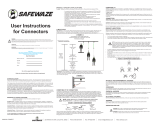 SafeWaze FS1017 Owner's manual
SafeWaze FS1017 Owner's manual
-
Guardian Fall Protection Safe-T Ladder Gate Owner's manual
-
AMX CSG-580 User manual
-
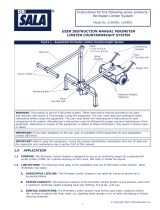 DBI/Sala Water Dispenser 2100090 User manual
DBI/Sala Water Dispenser 2100090 User manual
-
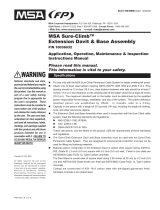 Sure-Climb SureClimb® Vertical Lifeline Cable Systems Owner's manual
Sure-Climb SureClimb® Vertical Lifeline Cable Systems Owner's manual
-
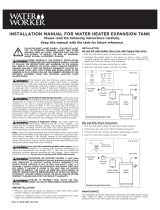 Water Worker G5L User manual
Water Worker G5L User manual
-
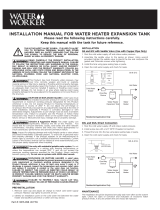 Water Worker G5L Operating instructions
Water Worker G5L Operating instructions
-
Guardian Fall Protection 10800 Operating instructions
-
Traceable 3315 Owner's manual
-
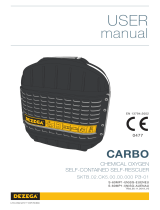 DEZEGA Carbo User manual
DEZEGA Carbo User manual

























